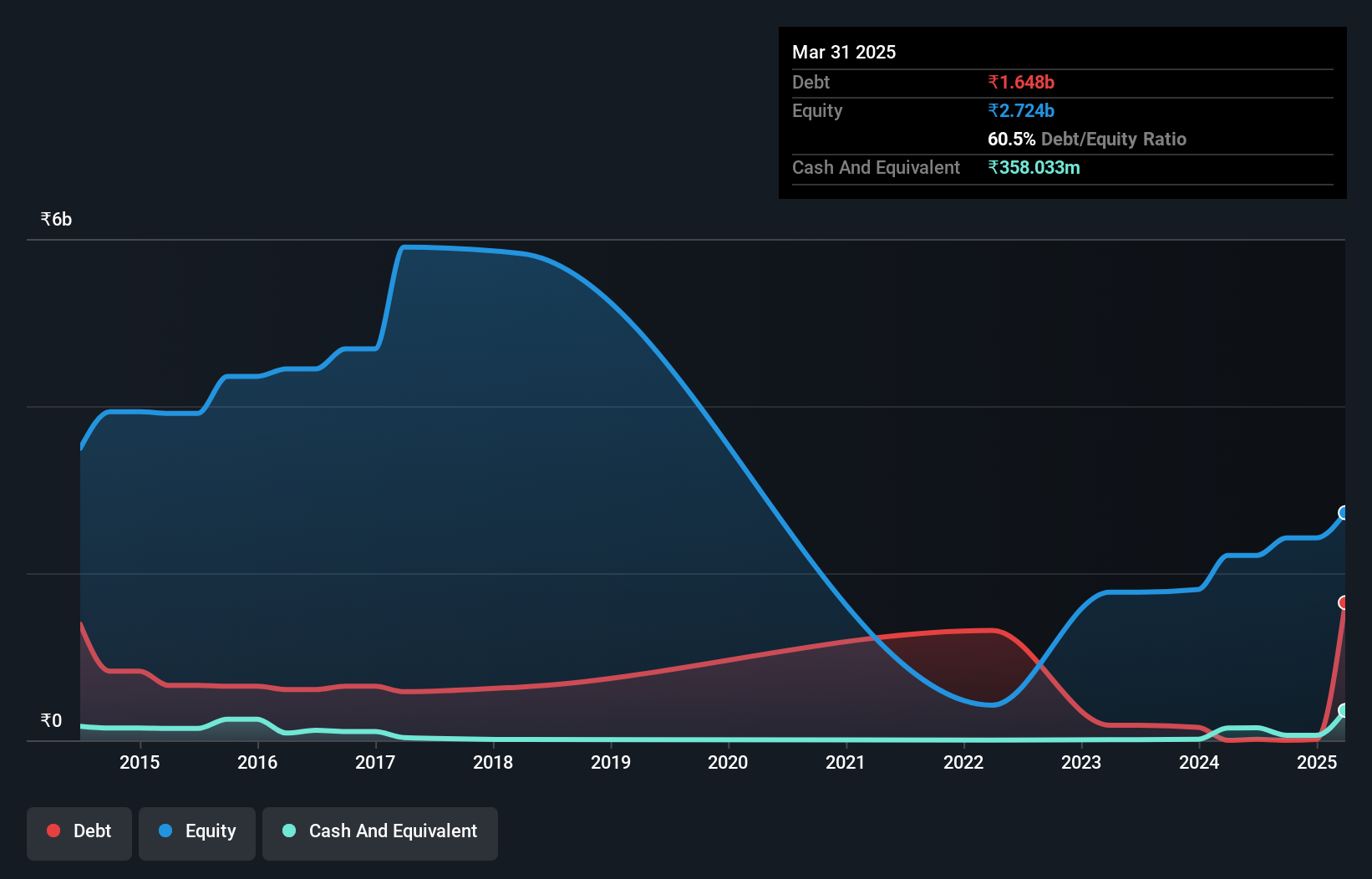- India
- /
- Energy Services
- /
- NSEI:DOLPHIN
Here's Why Dolphin Offshore Enterprises (India) (NSE:DOLPHIN) Can Manage Its Debt Responsibly

Howard Marks put it nicely when he said that, rather than worrying about share price volatility, 'The possibility of permanent loss is the risk I worry about... and every practical investor I know worries about.' When we think about how risky a company is, we always like to look at its use of debt, since debt overload can lead to ruin. As with many other companies Dolphin Offshore Enterprises (India) Limited (NSE:DOLPHIN) makes use of debt. But the more important question is: how much risk is that debt creating?
When Is Debt A Problem?
Generally speaking, debt only becomes a real problem when a company can't easily pay it off, either by raising capital or with its own cash flow. Ultimately, if the company can't fulfill its legal obligations to repay debt, shareholders could walk away with nothing. However, a more frequent (but still costly) occurrence is where a company must issue shares at bargain-basement prices, permanently diluting shareholders, just to shore up its balance sheet. Of course, the upside of debt is that it often represents cheap capital, especially when it replaces dilution in a company with the ability to reinvest at high rates of return. When we think about a company's use of debt, we first look at cash and debt together.
How Much Debt Does Dolphin Offshore Enterprises (India) Carry?
As you can see below, at the end of March 2025, Dolphin Offshore Enterprises (India) had ₹1.65b of debt, up from none a year ago. Click the image for more detail. However, because it has a cash reserve of ₹358.0m, its net debt is less, at about ₹1.29b.

How Strong Is Dolphin Offshore Enterprises (India)'s Balance Sheet?
According to the last reported balance sheet, Dolphin Offshore Enterprises (India) had liabilities of ₹240.4m due within 12 months, and liabilities of ₹1.65b due beyond 12 months. Offsetting this, it had ₹358.0m in cash and ₹1.97b in receivables that were due within 12 months. So it actually has ₹445.1m more liquid assets than total liabilities.
This short term liquidity is a sign that Dolphin Offshore Enterprises (India) could probably pay off its debt with ease, as its balance sheet is far from stretched.
See our latest analysis for Dolphin Offshore Enterprises (India)
We use two main ratios to inform us about debt levels relative to earnings. The first is net debt divided by earnings before interest, tax, depreciation, and amortization (EBITDA), while the second is how many times its earnings before interest and tax (EBIT) covers its interest expense (or its interest cover, for short). This way, we consider both the absolute quantum of the debt, as well as the interest rates paid on it.
Dolphin Offshore Enterprises (India) has a debt to EBITDA ratio of 2.8, which signals significant debt, but is still pretty reasonable for most types of business. But its EBIT was about 37.8 times its interest expense, implying the company isn't really paying a high cost to maintain that level of debt. Even were the low cost to prove unsustainable, that is a good sign. Notably, Dolphin Offshore Enterprises (India) made a loss at the EBIT level, last year, but improved that to positive EBIT of ₹457m in the last twelve months. The balance sheet is clearly the area to focus on when you are analysing debt. But it is Dolphin Offshore Enterprises (India)'s earnings that will influence how the balance sheet holds up in the future. So when considering debt, it's definitely worth looking at the earnings trend. Click here for an interactive snapshot.
Finally, while the tax-man may adore accounting profits, lenders only accept cold hard cash. So it is important to check how much of its earnings before interest and tax (EBIT) converts to actual free cash flow. In the last year, Dolphin Offshore Enterprises (India)'s free cash flow amounted to 23% of its EBIT, less than we'd expect. That's not great, when it comes to paying down debt.
Our View
On our analysis Dolphin Offshore Enterprises (India)'s interest cover should signal that it won't have too much trouble with its debt. However, our other observations weren't so heartening. For example, its conversion of EBIT to free cash flow makes us a little nervous about its debt. When we consider all the elements mentioned above, it seems to us that Dolphin Offshore Enterprises (India) is managing its debt quite well. But a word of caution: we think debt levels are high enough to justify ongoing monitoring. There's no doubt that we learn most about debt from the balance sheet. But ultimately, every company can contain risks that exist outside of the balance sheet. These risks can be hard to spot. Every company has them, and we've spotted 1 warning sign for Dolphin Offshore Enterprises (India) you should know about.
At the end of the day, it's often better to focus on companies that are free from net debt. You can access our special list of such companies (all with a track record of profit growth). It's free.
New: Manage All Your Stock Portfolios in One Place
We've created the ultimate portfolio companion for stock investors, and it's free.
• Connect an unlimited number of Portfolios and see your total in one currency
• Be alerted to new Warning Signs or Risks via email or mobile
• Track the Fair Value of your stocks
Have feedback on this article? Concerned about the content? Get in touch with us directly. Alternatively, email editorial-team (at) simplywallst.com.
This article by Simply Wall St is general in nature. We provide commentary based on historical data and analyst forecasts only using an unbiased methodology and our articles are not intended to be financial advice. It does not constitute a recommendation to buy or sell any stock, and does not take account of your objectives, or your financial situation. We aim to bring you long-term focused analysis driven by fundamental data. Note that our analysis may not factor in the latest price-sensitive company announcements or qualitative material. Simply Wall St has no position in any stocks mentioned.
About NSEI:DOLPHIN
Dolphin Offshore Enterprises (India)
Provides offshore and marine services to the oil and gas industry in India.
Acceptable track record with mediocre balance sheet.
Market Insights
Community Narratives


